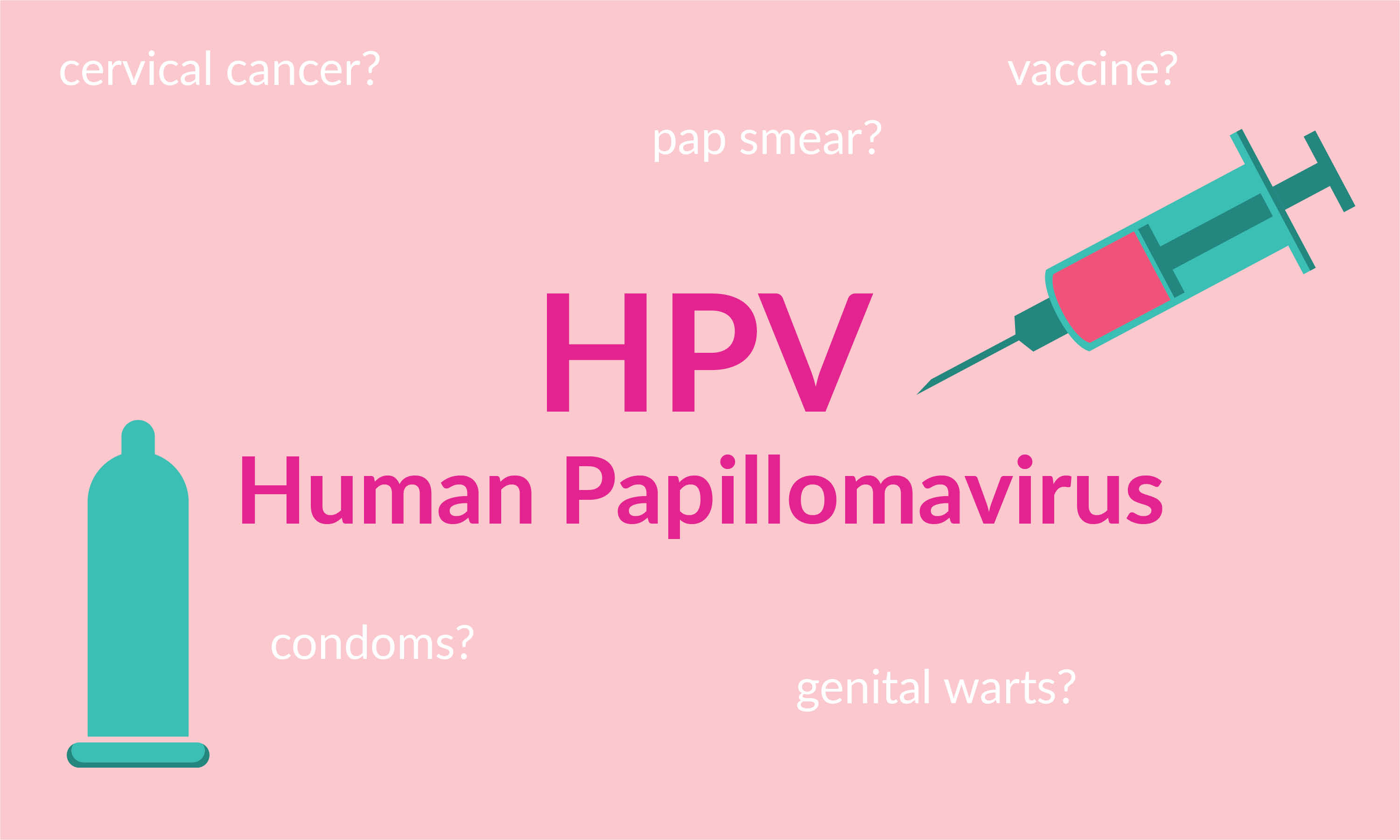What all does a pap smear show. Comprehensive Guide to Cervical Cancer Screening: Pap Smears and HPV Tests Explained
What does a Pap smear reveal. How often should cervical cancer screening be performed. What are the different cervical cancer screening options available. How to prepare for a Pap test. What do abnormal Pap smear results mean. How effective are Pap smears in detecting cervical cancer.
Understanding Cervical Cancer Screening: Pap Smears and HPV Tests
Cervical cancer screening is a crucial aspect of women’s health care, designed to detect precancerous changes or early-stage cervical cancer. The two primary screening methods are the Pap test (also known as a Pap smear) and the HPV test. These tests work together to provide a comprehensive assessment of cervical health.
The Pap Test: Detecting Cellular Abnormalities
The Pap test, formally known as the Papanicolaou test, is a procedure that examines cells collected from the cervix. During this test, a healthcare provider uses a speculum to visualize the cervix and collects a sample of cells. These cells are then sent to a laboratory for analysis under a microscope to detect any abnormalities that might indicate precancerous changes or cancer.
![]()
The HPV Test: Identifying High-Risk Infections
The HPV test specifically looks for the presence of human papillomavirus, which is the primary cause of cervical cancer. This test can be performed using the same cell sample collected during a Pap test or as a standalone procedure. By detecting high-risk HPV strains, healthcare providers can identify women who may be at increased risk for developing cervical cancer.
When Should You Start Cervical Cancer Screening?
The timing and frequency of cervical cancer screening depend on your age and risk factors. Here are the general guidelines:
- Ages 21-29: Begin Pap tests at age 21, with repeat testing every three years if results are normal.
- Ages 30-65: You have several options, including:
- HPV test alone every 5 years
- HPV test and Pap test together (co-testing) every 5 years
- Pap test alone every 3 years
- Over 65: Screening may be discontinued if you have a history of normal results and no high-risk factors.
Can cervical cancer screening be stopped after a certain age? For women over 65, screening may be discontinued if they have had consistently normal results for several years and have not had any cervical precancers. However, this decision should be made in consultation with a healthcare provider, taking into account individual risk factors and medical history.
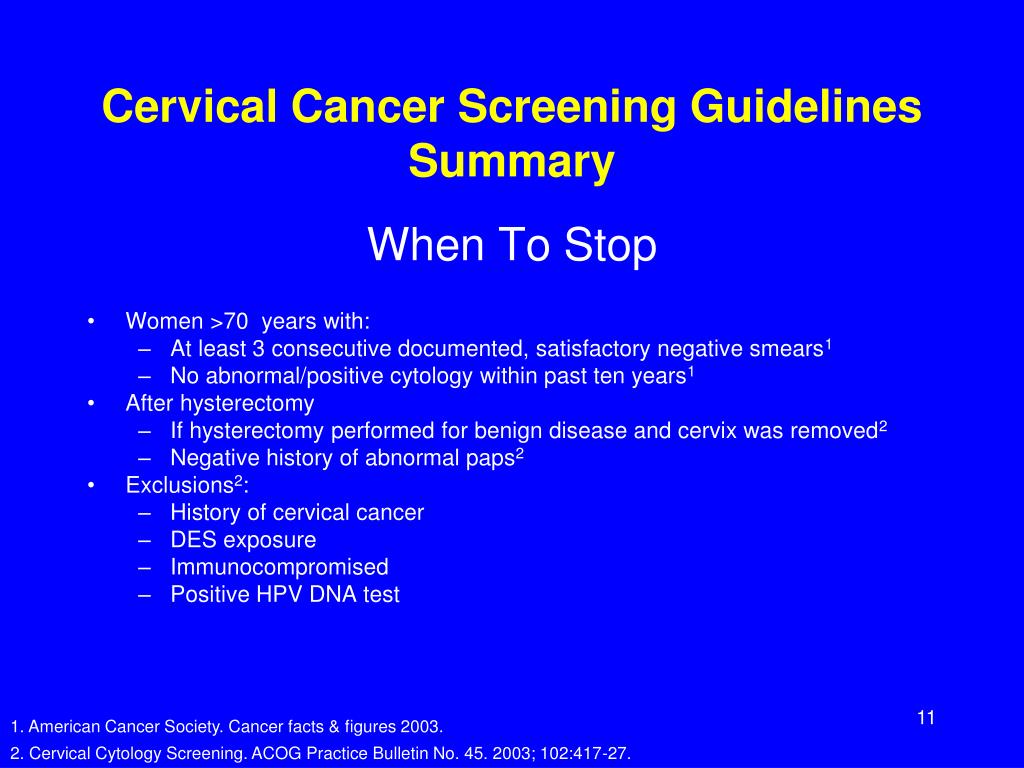
Preparing for Your Cervical Cancer Screening
To ensure accurate results from your Pap test, consider the following preparation tips:
- Avoid sexual intercourse for 2 days before the test
- Do not use douches, vaginal medicines, or spermicidal foams for 2 days prior to the test
- If you’re menstruating, it’s generally best to reschedule the test, but consult with your healthcare provider if this isn’t possible
Is it necessary to avoid certain activities before an HPV test? Unlike the Pap test, the HPV test doesn’t require any special preparation. However, following the same guidelines as for a Pap test can help ensure the most accurate results if both tests are being performed simultaneously.
Interpreting Cervical Cancer Screening Results
Understanding your test results is crucial for appropriate follow-up care. Here’s what different outcomes may mean:
Normal Results
If your Pap test and/or HPV test results are normal, it indicates a low risk of cervical cancer in the near future. Your healthcare provider will advise you on when to schedule your next screening based on your age and risk factors.

Abnormal Pap Test Results
Abnormal Pap test results don’t necessarily mean you have cancer. They may indicate:
- Mild inflammation
- HPV infection
- Precancerous changes (cervical dysplasia)
- Rarely, cervical cancer
How common are abnormal Pap test results? Approximately 5-10% of Pap tests produce abnormal results. Most of these abnormalities are minor and often resolve on their own without treatment.
Positive HPV Test Results
A positive HPV test indicates the presence of high-risk HPV types. This doesn’t mean you have cervical cancer, but it does suggest an increased risk. Your healthcare provider will recommend appropriate follow-up, which may include more frequent screening or additional tests.
The Importance of Regular Cervical Cancer Screening
Regular cervical cancer screening is a powerful tool in preventing cervical cancer. By detecting precancerous changes early, treatment can be initiated before cancer develops. The effectiveness of screening programs has significantly reduced cervical cancer rates in countries where they are widely implemented.

How effective is cervical cancer screening in preventing cancer? When performed regularly, cervical cancer screening can prevent up to 93% of cervical cancers. This high level of effectiveness is due to the ability to detect and treat precancerous changes before they progress to invasive cancer.
Advancements in Cervical Cancer Screening Technology
The field of cervical cancer screening continues to evolve, with new technologies improving the accuracy and efficiency of testing. Some recent advancements include:
- Liquid-based cytology: This method provides a cleaner sample for analysis, reducing the number of unsatisfactory tests.
- Computer-assisted screening: Artificial intelligence is being used to help identify abnormal cells more accurately.
- HPV genotyping: This allows for the identification of specific high-risk HPV types, enabling more personalized risk assessment.
Are these new technologies more accurate than traditional Pap smears? While these advancements offer potential improvements in sensitivity and specificity, traditional Pap smears remain highly effective when performed regularly. The choice of screening method should be based on individual risk factors and healthcare provider recommendations.

Addressing Barriers to Cervical Cancer Screening
Despite the importance of cervical cancer screening, many women face barriers to accessing these services. Common obstacles include:
- Lack of health insurance or underinsurance
- Limited access to healthcare facilities
- Cultural or language barriers
- Fear or embarrassment about the procedure
- Lack of awareness about the importance of screening
How can these barriers be overcome? Efforts to increase screening rates include:
- Public health education campaigns
- Programs offering free or low-cost screening services
- Mobile screening units to reach underserved areas
- Cultural competency training for healthcare providers
- Patient navigation services to help women access and understand screening
Are there programs available for women who can’t afford cervical cancer screening? Yes, the National Breast and Cervical Cancer Early Detection Program (NBCCEDP) provides free or low-cost screening services to eligible women. Additionally, many local health departments and community health centers offer sliding scale fees based on income.

The Role of HPV Vaccination in Cervical Cancer Prevention
While cervical cancer screening is crucial for early detection, prevention through HPV vaccination is equally important. The HPV vaccine protects against the most common high-risk HPV types that cause cervical cancer.
HPV Vaccine Recommendations
- Routine vaccination is recommended for all adolescents at age 11 or 12
- Catch-up vaccination is recommended for everyone through age 26 who hasn’t been adequately vaccinated
- Vaccination may be considered for some adults aged 27-45 who haven’t been vaccinated, based on individual circumstances
Does HPV vaccination eliminate the need for cervical cancer screening? While HPV vaccination significantly reduces the risk of cervical cancer, it doesn’t protect against all cancer-causing HPV types. Therefore, regular cervical cancer screening remains important even for vaccinated individuals, albeit potentially less frequently.
Managing Anxiety Around Cervical Cancer Screening
For many women, cervical cancer screening can be a source of anxiety. Understanding the procedure and its importance can help alleviate these concerns. Here are some strategies to manage screening-related anxiety:
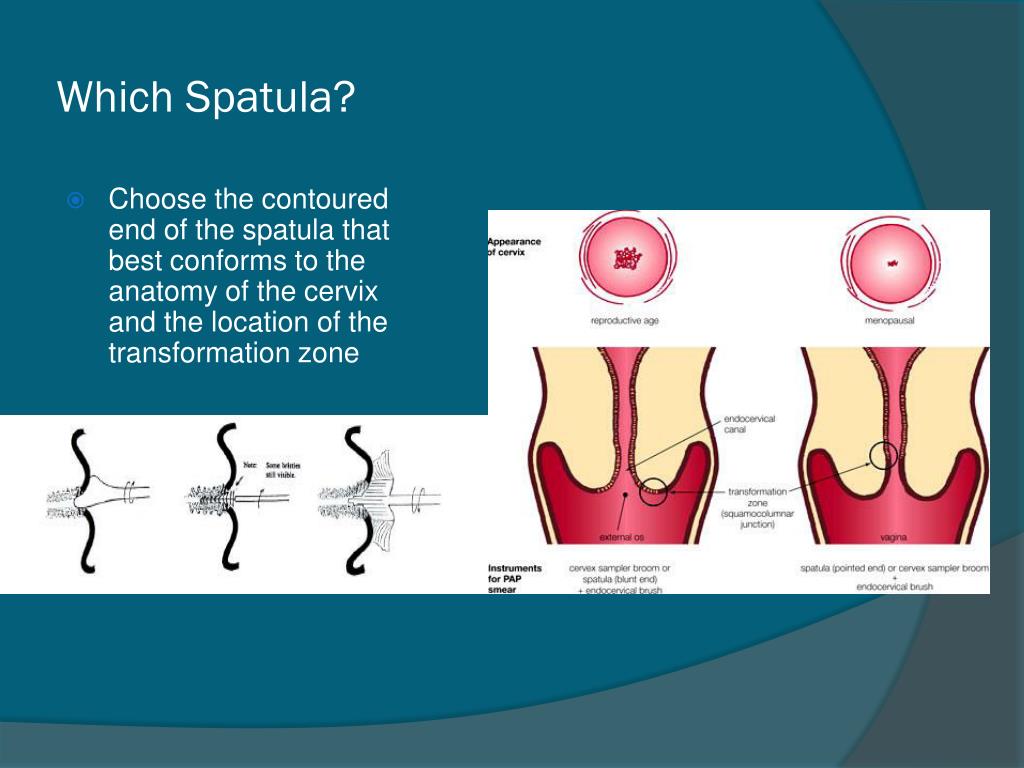
- Communicate your concerns with your healthcare provider
- Request a detailed explanation of the procedure beforehand
- Practice relaxation techniques before and during the screening
- Consider bringing a supportive friend or family member to the appointment
- Focus on the benefits of screening and early detection
How can healthcare providers help reduce patient anxiety about cervical cancer screening? Healthcare providers can play a crucial role in reducing anxiety by:
- Providing clear, compassionate communication
- Ensuring a comfortable, private examination environment
- Offering options for self-collection of samples when appropriate
- Addressing cultural sensitivities and language barriers
- Providing resources for emotional support and further information
The Future of Cervical Cancer Screening
As research continues, the future of cervical cancer screening looks promising. Emerging technologies and approaches include:
- At-home HPV testing kits for increased accessibility
- Biomarker tests to more accurately predict cancer risk
- Integration of artificial intelligence for improved accuracy in cell analysis
- Personalized screening intervals based on individual risk factors
- Development of more effective and broader spectrum HPV vaccines
How might these advancements change cervical cancer screening recommendations? As new technologies prove their effectiveness, screening guidelines may evolve to incorporate these advancements. This could lead to more personalized screening approaches, potentially reducing the frequency of testing for some women while ensuring adequate surveillance for those at higher risk.
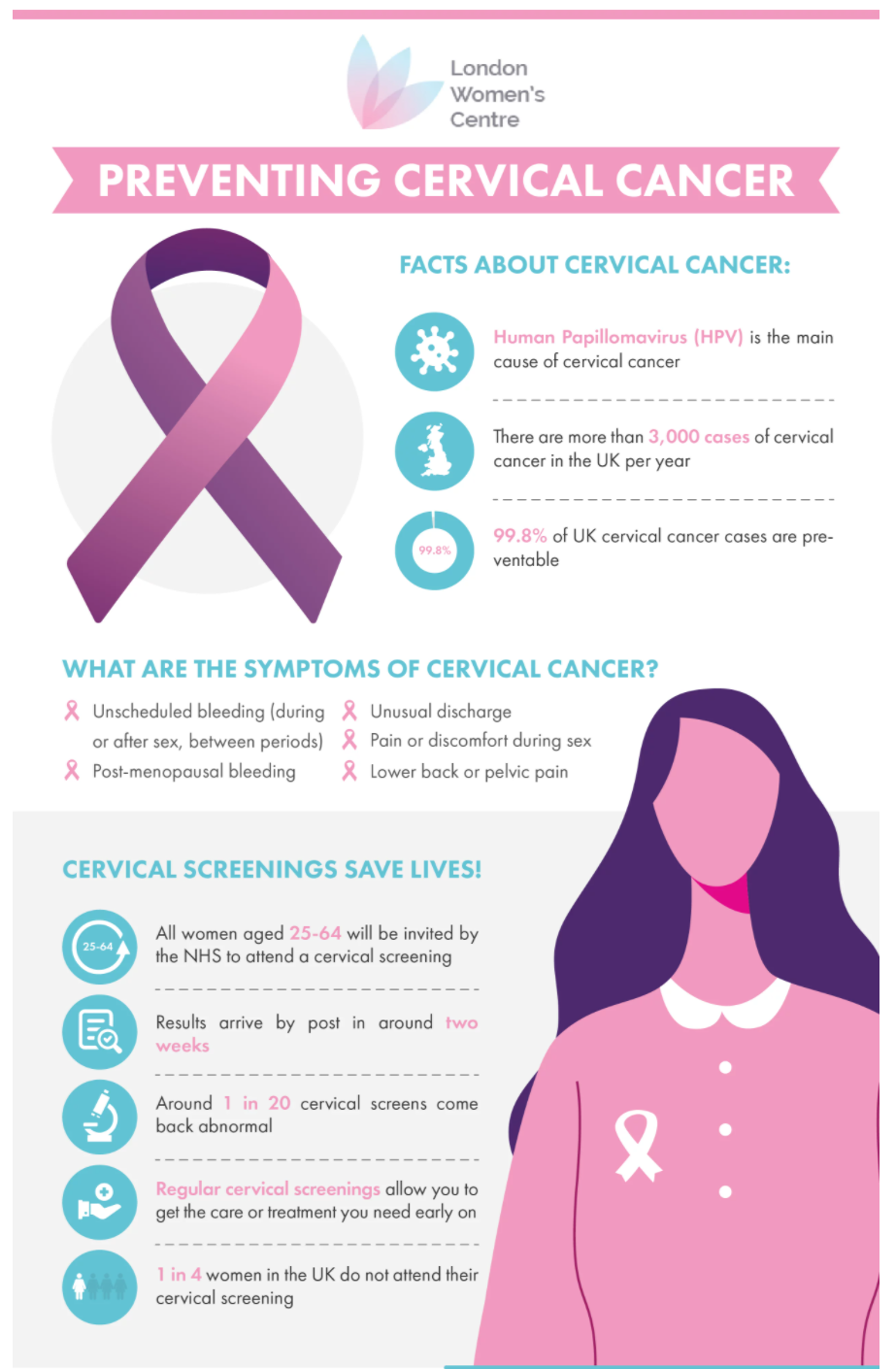
Cervical cancer screening remains a cornerstone of women’s preventive health care. By understanding the importance of regular screening, knowing what to expect during the procedure, and staying informed about new developments, women can take an active role in protecting their health. Remember, early detection through screening, combined with HPV vaccination, offers the best protection against cervical cancer. Always consult with your healthcare provider to determine the most appropriate screening schedule for your individual needs.
What Should I Know About Cervical Cancer Screening?
Español (Spanish) | Print
“If I didn’t go to that appointment, I might not be around for my kids,” says Cindy. Her cervical cancer screening test found precancerous cells. She shares her story in this video.
The HPV test and the Pap test can help prevent cervical cancer or find it early.
- The HPV test looks for the virus (human papillomavirus) that can cause cell changes on the cervix.
- The Pap test (or Pap smear) looks for precancers, cell changes on the cervix that might become cervical cancer if they are not treated appropriately.
Both tests can be done in a doctor’s office or clinic. During the Pap test, the doctor will use a plastic or metal instrument, called a speculum, to look inside your vagina. This helps the doctor examine the vagina and the cervix, and collect a few cells and mucus from the cervix and the area around it. The cells are sent to a laboratory.
- If you are getting a Pap test, the cells will be checked to see if they look normal.
- If you are getting an HPV test, the cells will be tested for HPV.
What is cervical precancer? When there are cervical cells that look abnormal but are not yet cancerous, it is called cervical precancer. These abnormal cells may be the first sign of cancer that develops years later. Cervical precancer usually doesn’t cause pain or other symptoms. It is found with a pelvic exam or a Pap test.
If you have a low income or do not have health insurance, you may be able to get a free or low-cost screening test through the National Breast and Cervical Cancer Early Detection Program.
Find out if you qualify
When to Get Screened
If You Are 21 to 29 Years Old
You should start getting Pap tests at age 21. If your Pap test result is normal, your doctor may tell you that you can wait three years until your next Pap test.
If You Are 30 to 65 Years Old
Talk to your doctor about which testing option is right for you—
- An HPV test only.
 This is called primary HPV testing. If your result is normal, your doctor may tell you that you can wait five years until your next screening test.
This is called primary HPV testing. If your result is normal, your doctor may tell you that you can wait five years until your next screening test. - An HPV test along with the Pap test. This is called co-testing. If both of your results are normal, your doctor may tell you that you can wait five years until your next screening test.
- A Pap test only. If your result is normal, your doctor may tell you that you can wait three years until your next Pap test.
If You Are Older Than 65
Your doctor may tell you that you don’t need to be screened anymore if—
- You have had normal screening test results for several years, and
- You have not had a cervical precancer in the past, or
- You have had your cervix removed as part of a total hysterectomy for non-cancerous conditions, like fibroids.
No special preparation is needed before you have an HPV test.
If you are getting a Pap test, you can take steps to make sure the test results are accurate. Avoid intercourse, douching, and using vaginal medicines or spermicidal foam for 2 days before the test. If you had sex before the test, go to the appointment as planned and let the doctor know.
Avoid intercourse, douching, and using vaginal medicines or spermicidal foam for 2 days before the test. If you had sex before the test, go to the appointment as planned and let the doctor know.
If you have your period, don’t worry. Both tests can still be done at this time.
Test Results
It can take as long as three weeks to receive your test results. If your test shows that something might not be normal, your doctor will contact you and figure out how best to follow up. There are many reasons why test results might not be normal. It usually does not mean you have cancer.
If your test results show cells that are not normal and may become cancer, your doctor will let you know if you need to be treated. In most cases, treatment prevents cervical cancer from developing. It is important to follow up with your doctor right away to learn more about your test results and receive any treatment that may be needed.
If your test results are normal, your chance of getting cervical cancer in the next few years is very low. Your doctor may tell you that you can wait several years for your next cervical cancer screening test. But you should still go to the doctor regularly for a checkup.
Your doctor may tell you that you can wait several years for your next cervical cancer screening test. But you should still go to the doctor regularly for a checkup.
What Does a Pap Test Detect?
Updated November 2022
Its real name: Papanicolaou test. There’s a good chance you know it as a Pap smear, or more appropriately, a Pap test. Discover the science behind this test — including what it doesn’t detect.
The Science Behind the Test
A Pap test is when a clinician takes a sample of cells from your cervix (the lower part of the uterus neck located at the top of the vagina). Then, they put the cells into small jar with a special liquid to preserve the sample so it can be tested for abnormalities under a microscope.
There are many reasons why you may have abnormal findings, such as:
- Mild inflammation
- Human papillomavirus (HPV)
- Cancer or precancer
Cervical cancer, if caught early, is highly treatable.
— Melissa A. Simon, MD
“The Pap test can detect changes in cells that could be concerning for possible cervical cancer or precancerous changes,” says Melissa A. Simon, MD, an obstetrician and gynecologist at Northwestern Medicine.
Abnormal test results will indicate a number of atypical squamous cells, which will then be classified as low-grade or high-grade squamous intraepithelial lesions (LSIL and HSIL, respectively). LSIL indicates that the changes are mildly abnormal and usually caused by HPV infection, and they may go away on their own. HSIL suggests more serious changes.
“Cells that are determined to be atypical of undetermined significance basically reveal slightly abnormal cells, and it does not clearly mean precancer is there. Usually, these test results indicate to follow up in a year,” says Dr. Simon.
Abnormal Pap test results are typically caused by HPV. HPV is a sexually transmitted infection (STI) that enters cells and changes them. HPV can be prevented by getting the vaccine, which targets the HPV types that most commonly cause certain types of cancer and genital warts. Certain high-risk types of HPV are associated with an increased risk for the following types of cancer:
HPV can be prevented by getting the vaccine, which targets the HPV types that most commonly cause certain types of cancer and genital warts. Certain high-risk types of HPV are associated with an increased risk for the following types of cancer:
- Cervical
- Vulva
- Vagina
- Penis
- Anus
- Mouth and throat cancer
Depending on your Pap test results, your physician will determine the appropriate next steps. This can include another test, known as a colposcopy, which uses a special camera to look at your cervix. During this procedure, a biopsy of cells on your cervix may be taken for further analysis. Your physician may also opt for a loop electrosurgical excision procedure, known as LEEP, if there are more concerning findings or repeated abnormal Pap test results. A LEEP removes part of your cervix tissue for diagnosis and/or treatment.
What It Can’t Determine
Although Pap tests can help detect precancerous cells on the cervix, there are other types of gynecologic cancers that Pap tests cannot detect.
Because your ovaries are far away from your cervix, it is extremely unlikely that a Pap test will detect ovarian cancer. For that to happen, the cancer cells would have to travel away from your ovaries, through your fallopian tubes and uterus, and into the area surrounding your cervix.
The Pap test is also limited in detecting other types of STIs. If you are concerned you may have a STI, you should ask your clinician to screen for specific STIs.
Pap Tests Are Part of Routine Screening
The U.S. Preventive Services Task Force (USPSTF) and the American College of Obstetricians and Gynecologists (ACOG) both suggest starting screening at age 21. However, the American Cancer Society suggests that cervical cancer screening begin at age 25.
Dr. Simon explains that there are many nuances and complexities of when to start screening and how frequently screening should be done. Cervical cancer can also take a long time to develop, which could explain the varying guidelines.
Screening with a Pap test every three years during this time period is acceptable. However, other types of screening include primary HPV testing every five years. If primary HPV testing is not available, screening may be performed with co-testing that combines an HPV test with a Pap test every five years.
“If you have vaginal discharge, abnormal bleeding or are feeling pain, schedule a visit with your healthcare clinician to discuss these symptoms,” says Dr. Simon. “It’s important that if you are ever in any doubt of what you are feeling or experiencing, and are questioning if you need screening or a test, always reach out to your care team so you can have that conversation.”
The USPSTF, ACOG and American Cancer Society agree that people older than 65 do not need to be screened if adequate prior screening has been completed with normal results and if there is no history or high risk of cervical cancer. Dr. Simon recommends talking to your primary care clinician about your individual risks and recommendations for screening.
Bottom Line
The Pap test is a screening tool that can help detect abnormal cells on your cervix. This early detection can be important in stopping precancerous cells from progressing to cervical cancer.
“Cervical cancer, if caught early, is highly treatable. And that’s why engaging in routine screening is very important,” says Dr. Simon. “Between the HPV vaccine and routine testing, this type of cancer really should be nonexistent.”
Pap smear for HPV in Moscow – Prices for Pap test – Cost of smear for HPV cytology
Pap smear for HPV in Moscow – Prices for a Pap test – The cost of a smear for HPV cytology
12/11/2020
Pap test for HPV (Pap test) in gynecology
HPV oncocytology smear (Pap smear, Pap test in gynecology, Pap test, screening for cervical cancer, smear for cytology, smear for atypical cells) is the leading screening method for diagnosing diseases of the cervix, allowing to assess the condition of its mucous membrane , the presence of background changes in the epithelium, as well as atypical, precancerous cells and cervical cancer.
The “gold standard” of cytological diagnosis of cervical cancer in the world is liquid oncocytology – a modified method of a cytological smear, when the biomaterial is not transferred to glass, as was done before, but entirely, together with a cytobrush, into a container with a liquid medium. After that, the composition is washed off by a special method from elements that impede cytological diagnosis (mucus, leukocytes, erythrocytes, detritus, inflammatory elements), and the sample is subjected to microscopic examination.
It is important that the cytologist receives 100% of the collected material! This makes the study more accurate. Improving the accuracy of cytological diagnosis when performing a liquid Pap test for HPV is achieved by overcoming all the errors associated with the preparation of a smear.
Pap test benefits
The advantages of this method are that its sensitivity is much higher than the traditional smear on glass and is 98%. All this makes the cytological examination of smears by the Papanicolaou method more informative, and the conclusion reliable. As a result, the proportion of false-negative results of the cytological examination, which is carried out at the H-Clinic, is reduced, and the reliability of diagnosing diseases of the cervix, in general, is significantly increased.
All this makes the cytological examination of smears by the Papanicolaou method more informative, and the conclusion reliable. As a result, the proportion of false-negative results of the cytological examination, which is carried out at the H-Clinic, is reduced, and the reliability of diagnosing diseases of the cervix, in general, is significantly increased.
The leading factor in the development of cervical cancer is the presence of oncogenic types of human papillomavirus in the cervical epithelium (in 99.7% of cases of cervical cancer, papillomavirus DNA was isolated from tumor samples). In this regard, currently used combined liquid Pap test for HPV , which allows you to assess not only the condition of the cervix at the cellular level, but also to identify the presence of papillomaviruses, indicating their type and viral load, because the activity of the virus and the degree of risk depend on it.
With the help of molecular biological methods, more than 100 serotypes of human papillomaviruses are identified, but at least 19 types are currently classified as oncogenic risk viruses:
- 16, 18 types are the most oncogenic, 70% of all cases of diagnosed oncology;
- 31, 33 – also belong to high-risk papillomaviruses;
- 30, 35, 39, 45, 52, 53, 56, 58 types – medium risk;
- 6, 11, 40, 42, 43, 44, 61 types – low risk.

For a long time, cervical cancer has consistently ranked 5th in the structure of oncological morbidity among women in Russia. In 2018, 17,766 cases were identified. Moreover, over the years, the growth rate of cases of this oncology is only gaining momentum. For 10 years, the indicator increased by 4.47% percent and the average growth rate was about 2.19% in year. In the same 2018, 6,392 women died of cervical cancer. Moreover, there is a clear increase in mortality in the age group among women 35-59 years old.
Thus, the picture is more than sad: every day we lose 17 young women from cervical cancer. The entire civilized world has been vaccinating its population against HPV for more than 15 years, critically reducing the risks of developing this disease (vaccination against the human papillomavirus in more than 100 countries is included in the national vaccination schedule).
In Russia, the vaccine is administered at the request of the patient (or the consent of the girl’s mother), in the list of mandatory vaccination (it is not yet included in the national Immunization Schedule.
Given the etiological factor of cervical cancer, the incidence and mortality figures in Russia, it is difficult to overestimate the vaccination of human papillomavirus infection. Vaccination eliminates the root cause, and screening reduces not only mortality, but also the incidence of cervical cancer, since thanks to modern diagnostic methods, the doctor can identify not only background processes that can lead to cancer, but also diagnose precancerous conditions and carry out the necessary treatment of an infectious disease in time .
Indications for Pap test in gynecology
According to current recommendations, screening for cervical cancer should begin within the first year after the onset of sexual activity, but no later than 21 years.
Women aged 21 to 29 years should be screened at least once every 3 years by cytology alone (assuming 3 consecutive smears are free of atypical and intraepithelial changes). Women aged 30 to 65 years should have combined cytology plus HPV screening – typing at least every 1-5 years, or at least every 1-3 years if screening includes only cytology (also if there are 3 x consecutive negative smears for cytology (Pap test) and for HPV).
Screening in women over 65 may be discontinued as recommended:
- if there are three or more reported consecutive negative results in the last 10 years;
- with a negative HPV test;
- no aggravating factors:
– a history of cervical disease;
– immunocompromising diseases or conditions, for example, the presence of HIV infection, severe autoimmune diseases;
– history of transplantation or chemotherapy.
Women who are HIV positive should have a Pap test as soon as possible after diagnosis. Also, screening for women with HIV infection should begin within the first year after the onset of sexual activity, regardless of the mode of transmission of HIV infection, but no later than 21 years.
Further, with a negative Pap test (absence of intraepithelial and / or malignant changes), the next Pap test with a transcript of the test results should be carried out at least 6-12 months later.
If the results of 3 registered consecutive smears are without atypical and epithelial changes, repeated cytological smears should be performed at least after 3 years.
Further, with a negative Pap test (absence of intraepithelial and / or malignant changes), the next Pap smear should be performed at least 6-12 months later.
If the results of 3 registered consecutive smears are without atypical and epithelial changes, repeated cytological smears should be performed at least after 3 years.
Combined HPV-PAP testing, according to current recommendations, should be carried out in women from 30 years of age and older.
Also, according to the recommendations, with a negative PAP test and an analysis for HPV infection, women over 30 years old are allowed to undergo an HPV-PAP test every 3 years.
With a negative PAP test, but the presence of human papillomavirus infection (with the exception of 16 or 16/18 types), women with HIV-positive status should undergo a liquid HPV-PAP test at least once every 12 months.
HIV-positive women should be screened for oncocytology and HPV typing throughout their lives.
If HPV types 16 or 18 and / or atypical epithelial changes are detected, colposcopy is necessary – visually examine the epithelium of the cervix at a 7.5–40-fold increase. A correctly assessed colposcopic picture allows you to identify the affected area and perform a targeted biopsy of the suspicious area of the cervix. In the future, after receiving a histological result, the doctor decides on further tactics and algorithm for the management and treatment of HPV and / or cancer.
Papanicolaou stain
How to prepare for testing
Preparing for a Pap smear from the cervix is simple and easy:
- It is not recommended to take a Pap test during menstruation and no later than 5 days before it;
- Avoid sexual activity for 48 hours prior to study;
- Do not perform within 24 hours prior to vaginal ultrasound examination;
- Do not use vaginal forms of drugs/remedies within 24-48 hours prior to the study;
- It is not recommended to take a Pap test in the presence of sexually transmitted infections, microflora disorders and inflammation of the vaginal mucosa, as well as during the treatment of these diseases.

It should always be remembered that there is a possibility of false-negative Pap cytology results, so it is very important to conduct regular follow-up examinations and follow the recommendations of your gynecologist.
The cost of a Papanicolaou smear (PAP test) in Moscow
Prices for liquid Pap test and other studies with decoding you can check by phone +7 (499) 588-84-25. You can take a smear at any convenient time by making an appointment with the gynecologist at the H-Clinic infectious diseases clinic by phone. Regularly undergoing such testing helps to detect cervical cancer at an early stage, which helps in the effective fight against this disease.
Author: Yulia Sergeevna Rukavtsova, gynecologist at H-Clinic
Medical editor: Head of the University Clinic, Candidate of Medical Sciences, infectious disease doctor Danila Sergeevich Konnov.
Back to list
Oncocytology smear (PAP smear).

| Contents |
| How is a Pap smear different from a regular oncocytology smear? |
| Who needs a Pap test? |
| How is a Pap test done? |
| How do I get a Pap test? |
| What are the Pap smear results? |
| What causes abnormal Pap smear results? |
| What happens if there is an abnormal Pap smear? |
| What is a colposcopy? |
| What happens if cellular changes are found during colposcopy? |
| What if the biopsy shows abnormalities? |
The founder of Russian gynecology Professor Vladimir Fedorovich Snegirev used to say: “What have I seen the most? Cancer.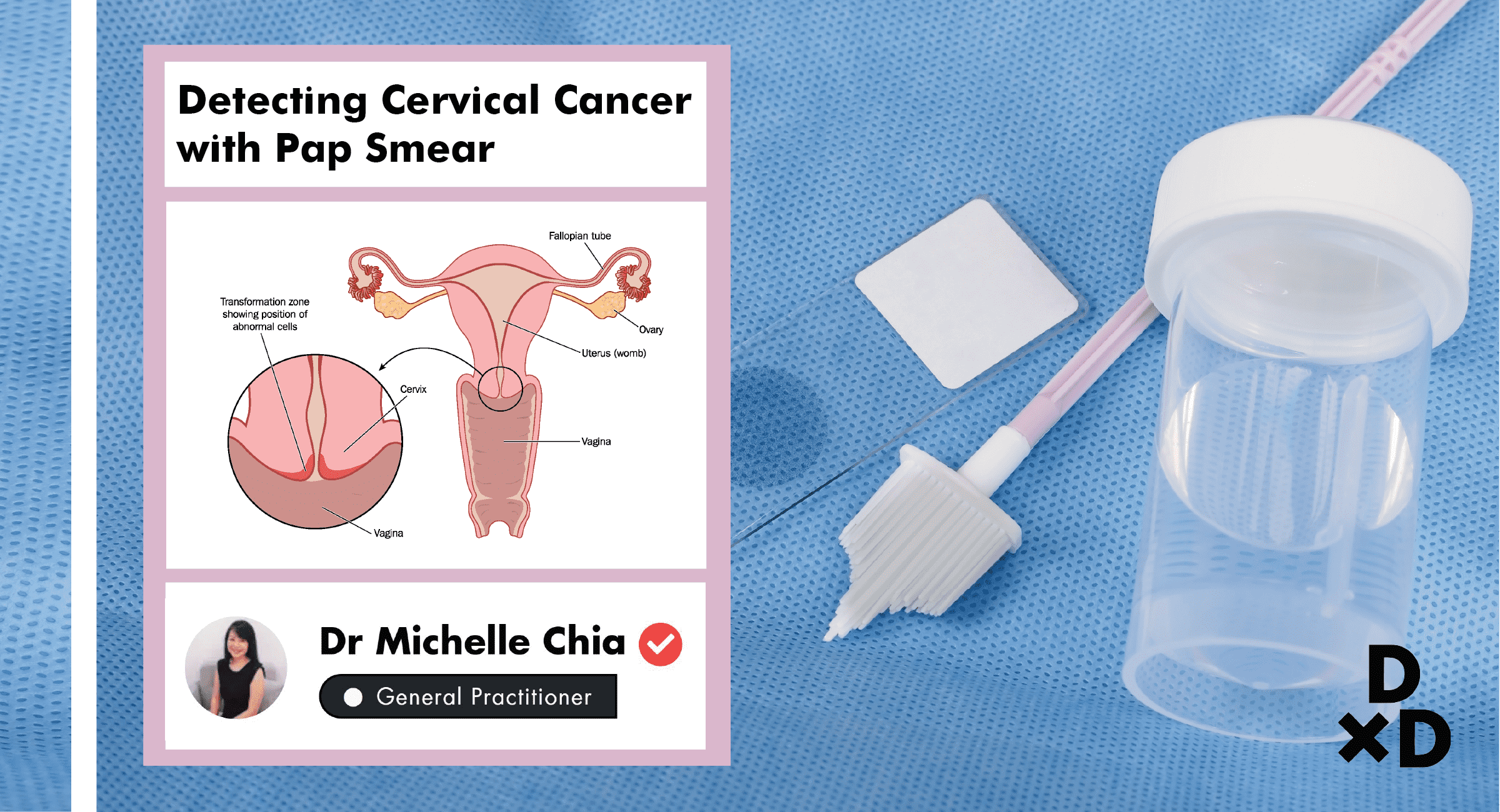 What do I know the least? Cancer.” Many decades have passed, but oncological diseases of the uterus, ovaries and mammary glands, as before, take the lives of many Russian women. The fact is that tissues that are subject to the greatest cyclic changes during the menstrual cycle are most prone to malignant degeneration.
What do I know the least? Cancer.” Many decades have passed, but oncological diseases of the uterus, ovaries and mammary glands, as before, take the lives of many Russian women. The fact is that tissues that are subject to the greatest cyclic changes during the menstrual cycle are most prone to malignant degeneration.
Cervical cancer occupies a special place among the various types of cancer of the female genital organs. Its specificity lies in the fact that it often develops against the background of benign precancerous processes. Refusal to have several children, early onset of sexual activity, sexually transmitted diseases, abortions, ecology, bad habits are factors contributing to the development of cervical diseases. Therefore, more and more experts are talking about the epidemic of cervical cancer that has engulfed the modern civilized world.
Modern methods of diagnostics: Pap smear and colposcopy allow to catch the initial precancerous changes and carry out a simple and effective treatment at an early stage. That is why in developed countries, where every woman has the opportunity to undergo such an examination every year, mortality from cervical cancer has been steadily declining.
That is why in developed countries, where every woman has the opportunity to undergo such an examination every year, mortality from cervical cancer has been steadily declining.
What is a Pap smear?
The Pap smear is a simple and effective test to detect cell abnormalities in the cervix. Designed in 1943, originally this test was designed to detect only cancer cells. Currently, with this test, abnormalities in cells at the precancerous stage can be detected. With the right plan for further action, many deviations can be successfully treated.
How is a Pap smear different from a regular smear for oncocytology?
Unlike oncocytological smears, which are done in antenatal clinics, when conducting a Pap smear, a specially selected composition of fixatives and paints is used, which makes it possible to identify early precancerous diseases of the cervix with the highest degree of certainty. This technique is standard for the developed countries of Europe and America, as it gives the least number of false negative results. When taking smears according to the usual technique, fixatives are not used, and the set of dyes is extremely simplified.
When taking smears according to the usual technique, fixatives are not used, and the set of dyes is extremely simplified.
At the Center for Immunology and Reproduction, swabs are taken using specially purchased glasses and stain kits from the USA. After the study, all slides are stored forever in the laboratory, which makes it possible to compare smears from the same woman over a number of years.
Who needs a Pap smear?
A Pap test should be done for all women who are or have ever been sexually active. It is recommended that a woman do such a smear once a year. A Pap smear should not be done during menstruation or if there is an inflammatory process in the vagina. During the day before taking a smear, you should not live sexually, use spermicidal creams, vaginal douches, douches or tampons, because all this can interfere with the correctness of the study.
How is a Pap smear done?
A Pap smear is part of a routine gynecological exam and is quick and painless. During the test, the doctor receives some cells from the cervix. To collect the cells, a small spatula and a soft-bristled brush are used, with which a smear is made on a glass plate. After that, the glasses are sent to the laboratory, where specially trained cytologists examine them under a microscope.
During the test, the doctor receives some cells from the cervix. To collect the cells, a small spatula and a soft-bristled brush are used, with which a smear is made on a glass plate. After that, the glasses are sent to the laboratory, where specially trained cytologists examine them under a microscope.
How do I get a Pap smear?
You can take the test at any of the CIR clinics at a time convenient for you, including during a consultation. All clinics (in the north, south and center of Moscow) work seven days a week from morning to evening. The analysis does not give up on the days of menstruation. Learn more about Pap smear analysis
What are the results of a Pap smear?
A Pap smear is normal (negative) when all cells are of normal size and shape. A smear with deviations (positive) occurs when cells with deviations in shape and size are found. To describe the degree of abnormality, special terminology is used: inflammatory process, low or high degree intraepithelial damage. An abnormal Pap smear does not always mean a woman has cancer.
An abnormal Pap smear does not always mean a woman has cancer.
What are the causes of abnormal Pap smear results?
When there is an infection such as thrush, trichomonas, chlamydia, or gonorrhea, the cells of the cervix are inflamed and appear abnormal. After the infection is treated, the Pap smear usually returns to normal.
Human papillomavirus is a common cause of abnormal Pap smears. The virus can be present in the cervix and also cause genital warts in the vulva. There are many types of human papillomavirus, some of which are associated with an increased risk of cervical cancer. Therefore, women who have been diagnosed with human papillomavirus may have an increased risk of developing cervical cancer.
Cancer cells are the most abnormal cells found on a Pap smear. In preinvasive cancer, only superficial cells are affected. Invasive cervical cancer means that the disease has spread beyond the surface layer of cells.
What is done in case of abnormal Pap tests?
The action plan depends on the degree of cellular changes described by the cytologist. If the changes are associated with inflammation, then the smear is usually repeated after a few months. If necessary, appropriate treatment can be prescribed. Pap smears with low grade abnormalities may be repeated after a few months, or a doctor may order a colposcopy. High grade abnormalities are always an indication for colposcopy. Patients with smear abnormalities are usually advised to use condoms and spermicidal gels or to abstain from sexual intercourse until the examination is completed.
If the changes are associated with inflammation, then the smear is usually repeated after a few months. If necessary, appropriate treatment can be prescribed. Pap smears with low grade abnormalities may be repeated after a few months, or a doctor may order a colposcopy. High grade abnormalities are always an indication for colposcopy. Patients with smear abnormalities are usually advised to use condoms and spermicidal gels or to abstain from sexual intercourse until the examination is completed.
What is a colposcopy?
A colposcope is an instrument, very similar to a microscope, that allows the doctor to examine the vulva, vagina and cervix under magnification so that areas of change can be more easily identified. The patient is placed on a gynecological chair and a speculum is inserted into the vagina. The doctor lubricates the cervix with special solutions that make it easier to see cellular abnormalities. The colposcope itself does not touch the patient. Colposcopy is not performed during menstruation.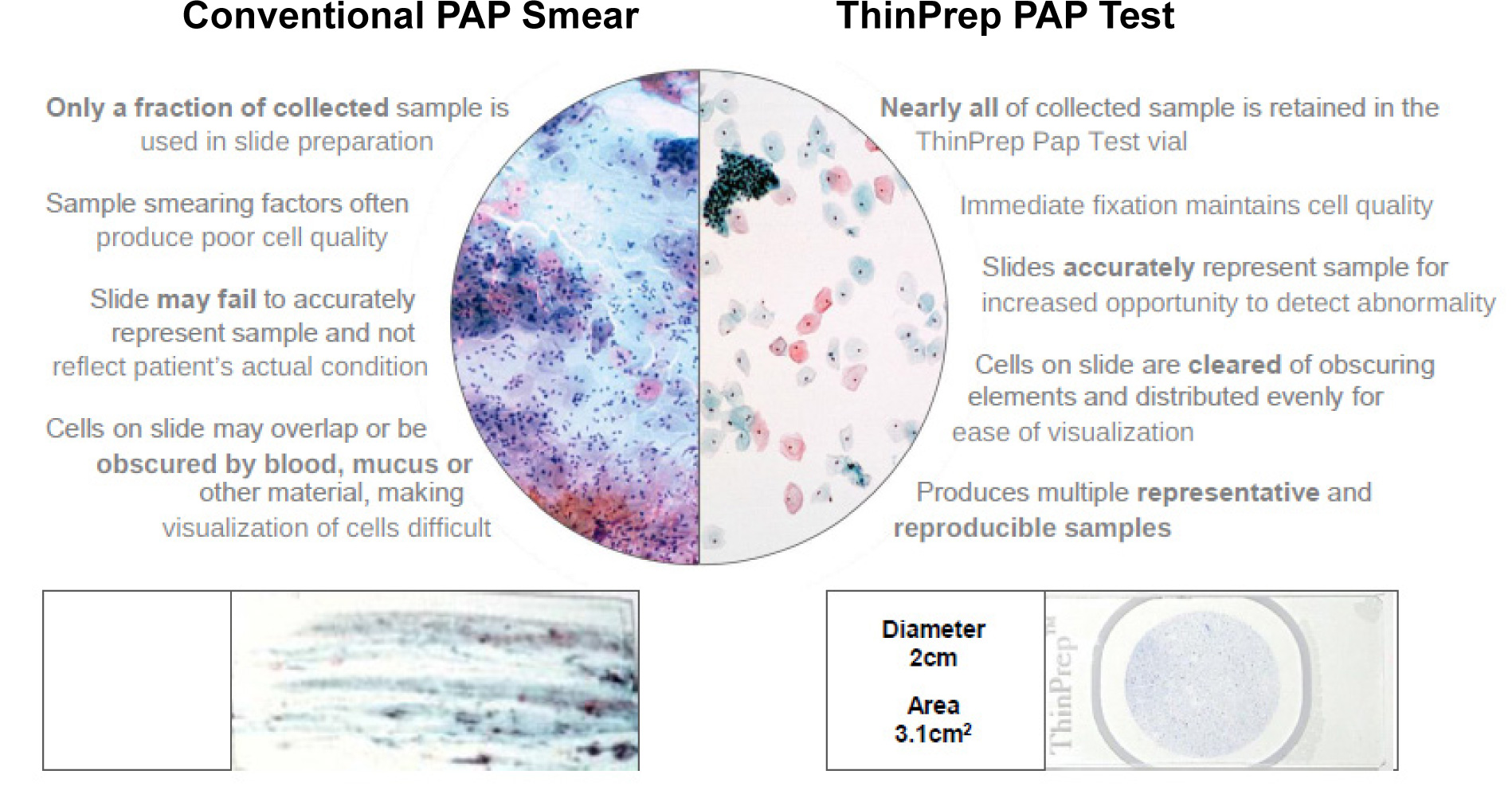 In the 24 hours before the colposcopy, the patient should not douche, use vaginal gels, ointments or tampons, because this may affect the accuracy of the study.
In the 24 hours before the colposcopy, the patient should not douche, use vaginal gels, ointments or tampons, because this may affect the accuracy of the study.
What is done in case of detection of cellular changes during colposcopy?
If cellular abnormalities are found, the doctor may perform a biopsy. A biopsy is the removal of a small piece of tissue from the affected area. A woman may feel a sharp prick or discomfort (some women may feel nothing at all). For several days after the biopsy, there may be a small bloody or spotting discharge from the genital tract. The tissue sample is sent to a histological laboratory, where it is examined by a specialist.
What if the biopsy shows abnormalities?
Physician’s advice will depend on the histological findings. At the Center for Immunology and Reproduction, the doctor may prescribe periodic monitoring, frequent Pap smears, colposcopy, or laser therapy. In this case, the changed cells are removed using a laser beam.

 This is called primary HPV testing. If your result is normal, your doctor may tell you that you can wait five years until your next screening test.
This is called primary HPV testing. If your result is normal, your doctor may tell you that you can wait five years until your next screening test.